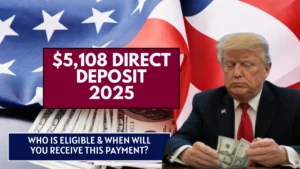Imagine finding a penny in your pocket that’s worth nearly a million dollars. Sounds like a dream, right? The 1943 Steel Wheat Penny is a numismatic treasure that could turn pocket change into a fortune. This blog dives into its history, value, and how to spot one.
What Is the 1943 Steel Wheat Penny?
The 1943 Steel Wheat Penny is a unique U.S. one-cent coin minted during World War II. Unlike traditional copper pennies, it’s made of zinc-coated steel, giving it a silver-like appearance. A rare few were mistakenly struck in copper, making them incredibly valuable.
These coins belong to the Lincoln Wheat Cent series, designed by Victor David Brenner in 1909. The obverse features Abraham Lincoln’s profile, while the reverse showcases two wheat stalks, hence the name “Wheat Penny.” The 1943 version stands out due to its wartime composition.
The Fascinating History Behind the 1943 Steel Penny
In 1943, World War II demanded vast amounts of copper for ammunition and military equipment. To conserve this vital resource, the U.S. Mint switched to steel planchets coated with zinc for penny production. Over 1 billion steel pennies were minted across Philadelphia, Denver, and San Francisco.
However, a small number of 1943 pennies were accidentally struck on leftover copper planchets from 1942. These errors, known as 1943 bronze or copper pennies, are among the rarest coins in U.S. history, with only about 20 known examples.
| Mint Location | Mintage (Steel) | Known Copper Errors |
|---|---|---|
| Philadelphia | 684,628,670 | ~10-15 |
| Denver | 217,660,000 | 1 |
| San Francisco | 191,550,000 | ~6 |
Why Is the 1943 Steel Penny So Valuable?
While most 1943 steel pennies are common, worth 10 cents to $20 in circulated condition, the copper versions are the real treasures. Their rarity, historical significance, and collector demand drive their value. A 1943-D copper penny sold for $840,000 in 2021, and another fetched $1.7 million in 2010.
The steel pennies themselves are collectible due to their unique wartime story. High-grade examples, especially from San Francisco, can fetch up to $7,000 in pristine condition. Errors like doubled mintmarks (e.g., 1943-D/D) also command premiums, with some valued at $12,000 or more.
How to Spot a Rare 1943 Penny in Your Change
Think you’ve found a 1943 penny? Here’s how to check if it’s a valuable copper error:
- Magnet Test: Steel pennies stick to magnets; copper ones don’t.
- Weight: Steel pennies weigh 2.7 grams; copper pennies weigh 3.11 grams.
- Color: Copper pennies have a reddish hue, while steel ones are silver-gray.
- Mint Mark: Check for “D” (Denver) or “S” (San Francisco) under the date.
If you suspect a copper penny, don’t clean it! Consult a professional grading service like PCGS or NGC for authentication. Counterfeits are common, so expert verification is crucial.
| Feature | Steel Penny | Copper Penny |
|---|---|---|
| Composition | Zinc-coated steel | 95% copper, 5% tin/zinc |
| Weight | 2.7 grams | 3.11 grams |
| Magnet Test | Magnetic | Non-magnetic |
| Value (Average) | $0.10–$20 | $100,000–$1.7M+ |
Notable Facts and Record-Breaking Sales
- Rarity: Only about 20 copper 1943 pennies are known to exist, making them numismatic legends.
- Top Sale: A 1943-D bronze penny sold for $840,000 in 2021, while a Philadelphia example hit $1.7 million in 2010.
- Discovery Stories: Some copper pennies were found in circulation in the 1940s and 1950s by sharp-eyed collectors. One was discovered in 2019 in a family’s coin box, valued at over $200,000.
- Counterfeits: Many fakes exist, often made by copper-plating steel pennies or altering dates. Always verify with experts.
Expert Tips for Coin Collectors
Ready to hunt for rare coins like the 1943 copper penny? Here’s how to start:
- Learn the Basics: Study numismatic guides or join clubs like the American Numismatic Association.
- Use Tools: A magnifying glass, scale, and magnet are essential for coin inspection.
- Check Change: Examine pocket change, old jars, or inherited collections for rare dates like 1943.
- Authenticate: Always get rare coins graded by PCGS or NGC to confirm authenticity.
- Explore Errors: Look for other valuable errors, like the 2000-P Sacagawea “Wounded Eagle” or Cheerios dollars.
For Sacagawea coin collectors, watch for the 2000-P Cheerios dollar with enhanced tail feathers, valued at $4,000+, or the rare mule error with a presidential dollar reverse, which sold for $32,000.
FAQs About the 1943 Steel Wheat Penny
How can I tell if my 1943 penny is copper?
Use a magnet. If it doesn’t stick and weighs 3.11 grams, it might be copper. Get it authenticated by PCGS or NGC.
Are all 1943 steel pennies valuable?
Most are common, worth 10 cents to $20. High-grade or error coins, like doubled mintmarks, can be worth hundreds or thousands.
What’s a Sacagawea minting mistake worth?
The 2000-P Cheerios dollar with enhanced tail feathers can fetch $4,000. A mule error with a presidential reverse sold for $32,000.
Where can I sell a rare 1943 penny?
Try reputable dealers, auction houses like Heritage Auctions, or online platforms like MA Shops. Always verify authenticity first.
Why are 1943 copper pennies so rare?
They were accidentally struck on leftover 1942 copper planchets, with only about 20 surviving, making them highly sought after.
Conclusion: Start Checking Your Change!
The 1943 Steel Wheat Penny is more than a coin—it’s a piece of World War II history with the potential to be worth a fortune. While most are common, the rare copper versions could change your life. Start checking your pocket change, old jars, or family collections. You might uncover a numismatic gem! Share this post with fellow coin enthusiasts, join a local coin club, or dive into the world of Sacagawea minting mistakes for more treasure-hunting fun.




